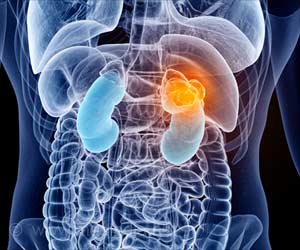The National Institutes of Health (NIH), US is launching the first integrated, drug development pipeline to produce new treatments for rare and neglected diseases.
The National Institutes of Health (NIH), US is launching the first integrated, drug development pipeline to produce new treatments for rare and neglected diseases.
The $24 million program jumpstarts a trans-NIH initiative called the Therapeutics for Rare and Neglected Diseases program (TRND), according to a press release from the NIH.A rare disease is one that affects fewer than 200,000 Americans. More than 6,800 rare diseases afflict more than 25 million Americans, it is estimated. However, effective pharmacologic treatments exist for only about 200 of these illnesses. Many neglected diseases also lack treatments.
Unlike rare diseases, however, neglected diseases may be quite common in some parts of the world, especially in developing countries where people cannot afford expensive treatments. Private companies seldom pursue new therapies for these types of illnesses because of high costs and failure rates and the low likelihood of recovering investments or making a profit.
"NIH is eager to begin the work to find solutions for millions of our fellow citizens faced with rare or neglected illnesses," said NIH Acting Director Raynard S. Kington. "The federal government may be the only institution that can take the financial risks needed to jumpstart the development of treatments for these diseases, and NIH clearly has the scientific capability to do the work."
The drug development process is complicated and expensive. Studies suggest that it currently takes more than a dozen years and hundreds of millions of dollars to take a potential drug from discovery to the marketplace. And the failure rate is high.
"This initiative is really good news for patients with rare or neglected diseases," said Director Stephen C. Groft, Director of NIH Office of Rare Diseases Research (ORDR). "While Congress has previously taken important steps to help these patients, such as providing incentives for drug companies under the Orphan Drug Act, this is the first time NIH is providing support for specific, preclinical research and product development known to be major barriers preventing potential therapies from entering into clinical trials for rare or neglected disorders. While we do not underestimate the difficulty of developing treatments for people with these illnesses, this program provides new hope to many people world-wide."
Advertisement
Unfortunately, the success rate in this preclinical process is low, with 80 to 90 percent of projects failing in the preclinical phase and never making it to clinical trials. And the costs are high: it takes two to four years of work and $10 million, on average, to move a potential medicine though this preclinical process. Drug developers colloquially call this the "Valley of Death."
Advertisement
If a compound does survive this preclinical stage, TRND will work to find a company willing to test the therapy in patients. There are several stages to the clinical trials process that can take several years before the safety and efficacy of a new drug is determined. FDA will only approve a drug for general use after it passes these trials. The clinical trials process is also expensive, but the failure rate is lower at this stage.
NIH already has many components of the drug development pipeline within its research programs. TRND will begin its work in collaboration with the NIH Chemical Genomics Center (NCGC), a center initially developed as part of the NIH Roadmap for Medical Research. NCGC has developed a robotic, high-throughput screening system and a library of more than 350,000 compounds that it uses to make basic discoveries and probe cellular pathways. NCGC also has developed a team of researchers skilled in developing assays representing disease processes that can be tested in its screening system, and has extensive experience building collaborative projects with investigators from across the research community. Molecules with potential therapeutic properties that emerge from the NCGC screening process could be fed into the TRND drug development pipeline.
If all the preclinical hurdles can be crossed, a possible treatment must still be tested in a series of clinical trials.
Numerous obstacles impede the development of new drugs for rare and neglected diseases. In addition to the reluctance of private companies to risk their capital on a potentially low return, relatively few basic researchers study rare diseases, so the underlying cause of the illness frequently remains unknown. And, because rare diseases are rare, researchers often have difficulty recruiting enough people with the disorder to participate in a clinical trial once a candidate compound reaches the stage where it can be tested in people. Moreover, for many rare diseases, the natural history of the disease is poorly understood, so researchers lack the needed clinical measures (such as blood pressure) that can demonstrate whether a treatment is working.
To address these difficulties, TRND will seek a wide range of collaborations with academic researchers, as well as partnerships with patient advocacy organizations, disease-oriented foundations and others interested in treatments for particular illnesses. TRND’s leaders hope that the collaborations will help lay the groundwork for clinical trials once that point in drug development is reached.
TRND is currently setting up an oversight process to help it decide which projects that address thousands of rare and neglected diseases will be pursued. Leadership currently envisions a small number of diseases being studied each year, with strict criteria used to determine which molecules will be studied for which diseases. NIH expects to use existing intellectual property policies to transfer licenses for TRND-discovered drugs to private companies or others for development, clinical testing and marketing.
Source-Medindia
GPL/L









